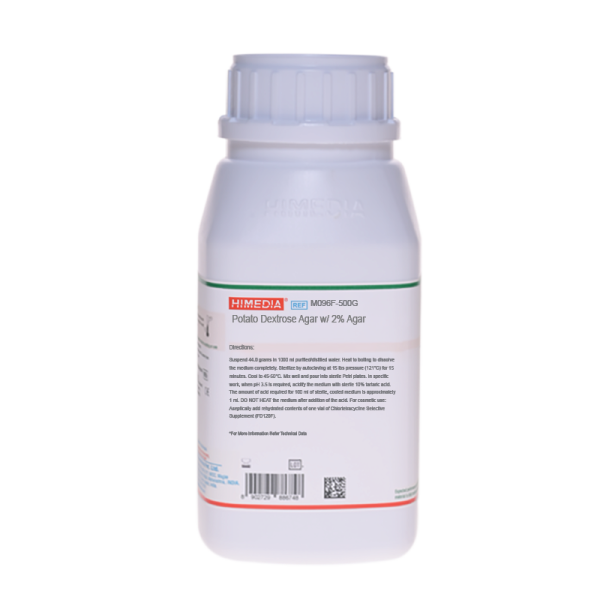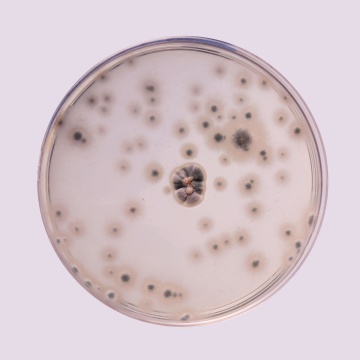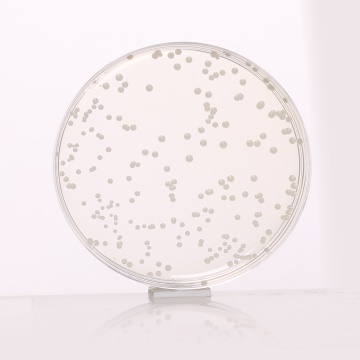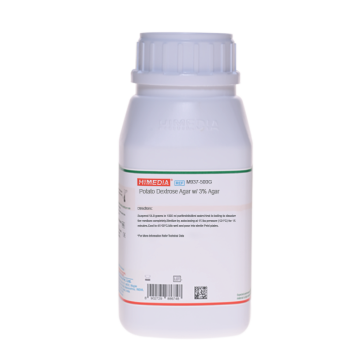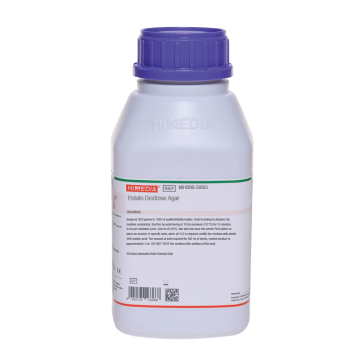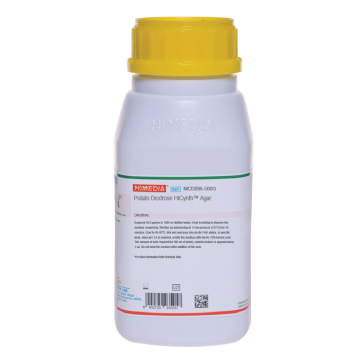 Your enquiry has been submitted
Your enquiry has been submitted
Potato Dextrose Agar w/ 2% Agar
Intended Use
Recommended for isolation and enumeration of yeasts and moulds from dairy and other food products in accordance with FDA BAM, 1998.
Composition
| Ingredients | g/L |
|---|---|
| Potatoes, infusion from 200g # | 200.000 |
| Dextrose (Glucose) | 20.000 |
| Agar | 20.000 |
Final pH (at 25°C): 5.6±0.2
**Formula adjusted, standardized to suit performance parameters
#- Equivalent to Potatoes, infusion from
Directions
Suspend 44.0 grams in 1000 ml purified / distilled water. Heat to boiling to dissolve the medium completely. Sterilize by autoclaving at 15 lbs pressure (121°C) for 15 minutes. Cool to 45-50°C. Mix well before dispensing. In specific work, when pH 3.5 is required, acidify the medium with sterile 10% tartaric acid. The amount of acid required for 100 ml. of sterile, cooled medium is approximately 1 ml. Do not heat the medium after addition of the acid.
Principle And Interpretation
A large group of fungi found in the nature can spoil the foods and at times turns to be pathogenic to humans. This can also lead to economic losses at producer and consumer levels, apart from its toxic effects. Dilution plating and direct plating are the most common methods used in the isolation and enumeration of fungi. The direct plating is more efficient than the dilution plating method for detecting individual mold species including most of the toxin producers, but it is less effective in detecting yeasts. Potato Dextrose agar w/2% agar is recommended by FDA BAM (1) for plate counts of yeasts and moulds in the examination of foods and dairy products.
The media has also been used for stimulating sporulation, for maintaining stock cultures and for differentiation of typical varieties of dermatophytes on the basis of pigment production (2). Potato infusion and dextrose promote luxuriant fungal growth. Adjusting the pH of the medium by tartaric acid to 3.5 inhibits the bacterial growth. Heating the medium after acidification should be avoided as it may hydrolyse the agar which can render the agar unable to solidify.
Add 25-50g of the sample into 0.1% peptone water to achieve 10-1 dilution and homogenize in a stomacher for 2 min or blend it for 30-60 sec. Make appropriate dilutions in 0.1% peptone water. In normal conditions, dilutions up to 10-6 shall satisfy the needs. Add 0.1 ml into Dichloran Glycerol Medium Base w/Rose Bengal/ Dichloran (M1000) during spread plate technique; while add 1ml into Dichloran Glycerol Medium Base (M1129) during pour plate technique. Incubate at 25°C and count the colonies. Individual colonies from these plates can be isolated using Potato Dextrose agar w/2% agar (M096F) and species identification can be done if necessary (1).
Type of specimen
Food samples
Specimen Collection and Handling
For food samples, follow appropriate techniques for sample collection and processing as per guidelines (3).
After use, contaminated materials must be sterilized by autoclaving before discarding.
Warning and Precautions
Read the label before opening the container. Wear protective gloves/protective clothing/eye protection/ face protection. Follow good microbiological lab practices while handling specimens and culture. Standard precautions as per established guidelines should be followed while handling specimens. Safety guidelines may be referred in individual safety data sheets.
Limitations
- Heating the medium after acidification should be avoided as it may hydrolyse the agar which can render the agar unable to solidify.
Performance and Evaluation
Performance of the medium is expected when used as per the direction on the label within the expiry period when stored at recommended temperature.
Quality Control
Appearance: Cream to yellow homogeneous free flowing powder
Gelling: Firm, comparable with 2.0% Agar gel
Colour and clarity of prepared medium: Light amber coloured clear to slightly opalescent gel forms in Petri plates
Reaction: pH of 4.4% w/v aqueous solution at 25°C. pH : 5.6±0.2
pH: 5.40-5.80
Cultural Response:
Cultural characteristics observed after an incubation at 25°C for 5-7 days.
| Organism | Inoculum (CFU) | Growth | Recovery |
|---|---|---|---|
| Candida albicans ATCC 10231 (00054*) | 50-100 | luxuriant | >=70% |
| Saccharomyces cerevisiae ATCC 9761 (00058*) | 50-100 | luxuriant | >=70% |
Key: *Corresponding WDCM numbers.
Storage and Shelf Life
Store between 10-30°C in a tightly closed container and the prepared medium at 2-8°C. Use before expiry date on the label. On opening, product should be properly stored dry, after tightly capping the bottle in order to prevent lump formation due to the hygroscopic nature of the product. Improper storage of the product may lead to lump formation. Store in dry ventilated area protected from extremes of temperature and sources of ignition. Seal the container tightly after use. Product performance is best if used within stated expiry period.
Disposal
User must ensure safe disposal by autoclaving and/or incineration of used or unusable preparations of this product. Follow established laboratory procedures in disposing of infectious materials and material that comes into contact with sample must be decontaminated and disposed of in accordance with current laboratory techniques (4,5).
Reference
- FDA, U.S. 1998. Bacteriological Analytical Manual. 8 ed. Gaithersburg, MD: AOAC International.
- MacFaddin, J. F. 1985. Media for Isolation-Cultivation-Identification-Maintenance of Medical Bacteria vol. 1. Baltimore: Williams and Wilkins.
- Salfinger Y., and Tortorello M.L., 2015, Compendium of Methods for the Microbiological Examination of Foods, 5th Ed., American Public Health Association, Washington, D.C.
- Isenberg, H.D. Clinical Microbiology Procedures Handbook 2nd Edition.
- Jorgensen, J.H., Pfaller, M.A., Carroll, K.C., Funke, G., Landry, M.L., Richter, S.S and Warnock., D.W. (2015) Manual of Clinical Microbiology, 11th Edition. Vol. 1.
| Product Name | Potato Dextrose Agar w/ 2% Agar |
|---|---|
| SKU | M096F |
| Product Type | Regular |
| Physical Form | Powder |
| Origin | Animal Free (Veg) |
| Packaging type | HDPE |
| References | 1.Downes F. P. and Ito K., (Eds.), 2001, Compendium of Methods for the Microbiological Examination of Foods, 4th Ed.,APHA, Washington, D.C. 2.FDA Bacteriological Analytical Manual, 2005, 18th Ed., AOAC, Washington, DC. 3.Wehr H. M. and Frank J. H., 2004, Standard Methods for the Microbiological Examination of Dairy Products, 17th Ed.,APHA Inc., Washington, D.C. 4.MacFaddin J. F., 1985, Media for the Isolation-Cultivation-Identification-Maintenance of Medical Bacteria, Vol.1, Williamsand Wilkins, Baltimore5.The United States Pharmacopoeia, 2016, The United States Pharmacopoeial Convention. Rockville, MD. 6.British Pharmacopoeia, 2016, The Stationery office British Pharmacopoeia7.European Pharmacopoeia, 2014, European Dept. for the quality of Medicines. 8.Japanese Pharmacopoeia, 2008. |
| Customized Product Available | No |



